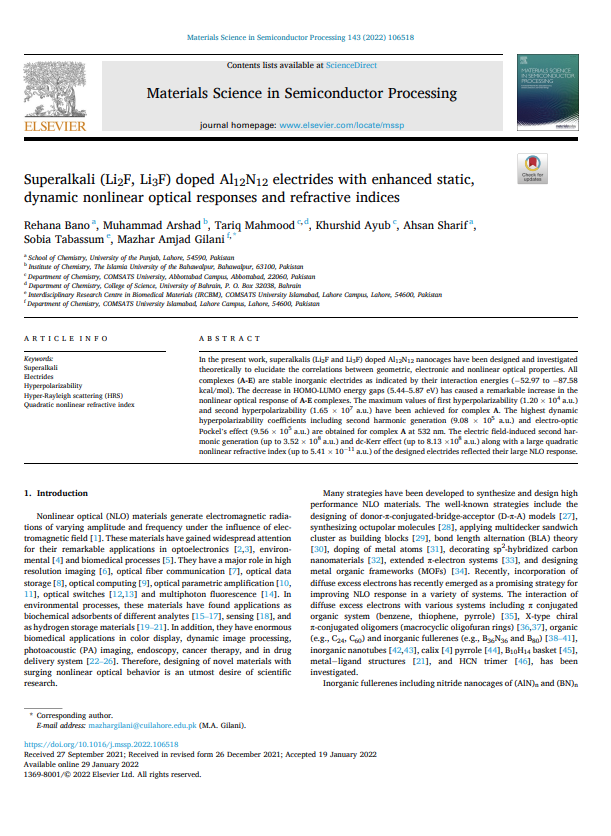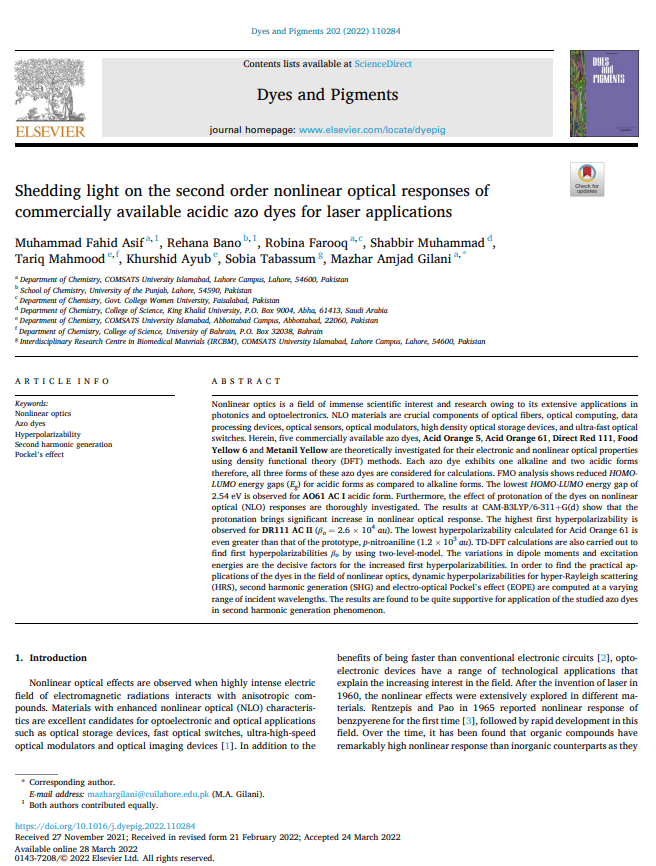Document
Diamondoid as potential nonlinear optical material by superalkali doping: A first principles study
Linked Agent
Ayub, Khurshid, Author
Mahmood, Tariq, Author
Arshad, Muhammad, Author
Sharif, Ahsan, Author
Tabassum, Sobia, Author
Gilani, Mazhar Amjad, Author
Title of Periodical
Diamond & Related Materials
Country of Publication
Netherlands
Place Published
Amsterdam
Publisher
Elsevier, ScienceDirect
Periodical Number
135 (2023) 109826
Date Issued
2023
Language
English
Subject
English Abstract
A B S T R A C T:
Adamantane (C10H16), the smallest diamondoid molecule, has sparked considerable scientific interest due to its symmetric, single cage-shaped structure. In the current work, the geometric, electronic, and nonlinear optical responses of Li3O, Na3O and K3O clusters doped adamantanes have been investigated via DFT simulations. The calculated values of interaction energies ( 5.50 to 6.91 kcal/mol) and vertical ionization energies (3.01–3.56eV) reflected that the designed M3O-Ada complexes are thermodynamically and chemically stable. Charge transfer is probed through natural population analysis and the highest charge transfer (0.038 |e|) is observed for K3O-Ada complex. The electride nature of M3O-Ada complexes is confirmed through their electron density distribution and their energy gaps (2.19–3.06 eV) are reduced significantly. Interestingly, the absorption maxima (1387–1629 nm) of M3O-Ada electrides fall in the near infrared region. The highest first and second hyperpolarizability values of 5.9 × 105 au and 2.6 × 108 au are observed for K3O-Ada electride. The maximum hyper-Rayleigh scattering and second harmonic generation values of 1.3 × 107 au and 6.5 × 106 au are obtained at 1907 nm whereas the electro-optical Pockel's effect (6.5 × 106 au) is maximum at 1064 nm. Moreover, the dynamic second hyperpolarizability co-efficients (EOKE, EFISHG) are also computed at varying wavelengths. The
M3O-Ada electrides exhibit the maximum nonlinear refractive index n2 of 1.9 × 10 7 cm2 W 1 at 1064 nm. This study will pave the way to the designing of stable superalkali doped diamondoids with enhanced NLO response.
Member of
Same Subject

